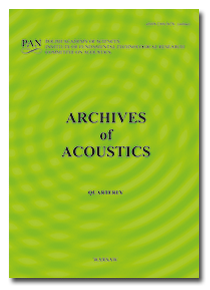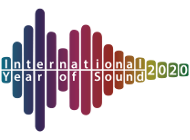Archives of Acoustics,
27, 4, pp. , 2002
Ultrasonic propagation for measuring the activation energy and volume of a hole in liquids
Mathematical expressions are introduced in this paper in
order to measure the compressional relaxation time by the propagation of
ultrasonic waves in associated and nonassociated liquids. The expressions are
based on the concept of complex and frequency-dependent compressibility
represented as a function of ultrasonic velocity and absorption in liquids. The
available experimental data reported earlier in the literature are used in these
mathematical expressions to calculate the molecular activation energy and the
volume of a hole for some liquids. The introduced expressions concern the
relations between the liquid compressional relaxation time and Frenkel's
intermolecular relaxation time at different values of temperature and pressure.
The effect of vibrational relaxation, bulk viscosity and structural
rearrangement on ultrasonic absorption in liquids has been investigated.
order to measure the compressional relaxation time by the propagation of
ultrasonic waves in associated and nonassociated liquids. The expressions are
based on the concept of complex and frequency-dependent compressibility
represented as a function of ultrasonic velocity and absorption in liquids. The
available experimental data reported earlier in the literature are used in these
mathematical expressions to calculate the molecular activation energy and the
volume of a hole for some liquids. The introduced expressions concern the
relations between the liquid compressional relaxation time and Frenkel's
intermolecular relaxation time at different values of temperature and pressure.
The effect of vibrational relaxation, bulk viscosity and structural
rearrangement on ultrasonic absorption in liquids has been investigated.
Full Text:
PDF
Copyright © Polish Academy of Sciences & Institute of Fundamental Technological Research (IPPT PAN).





